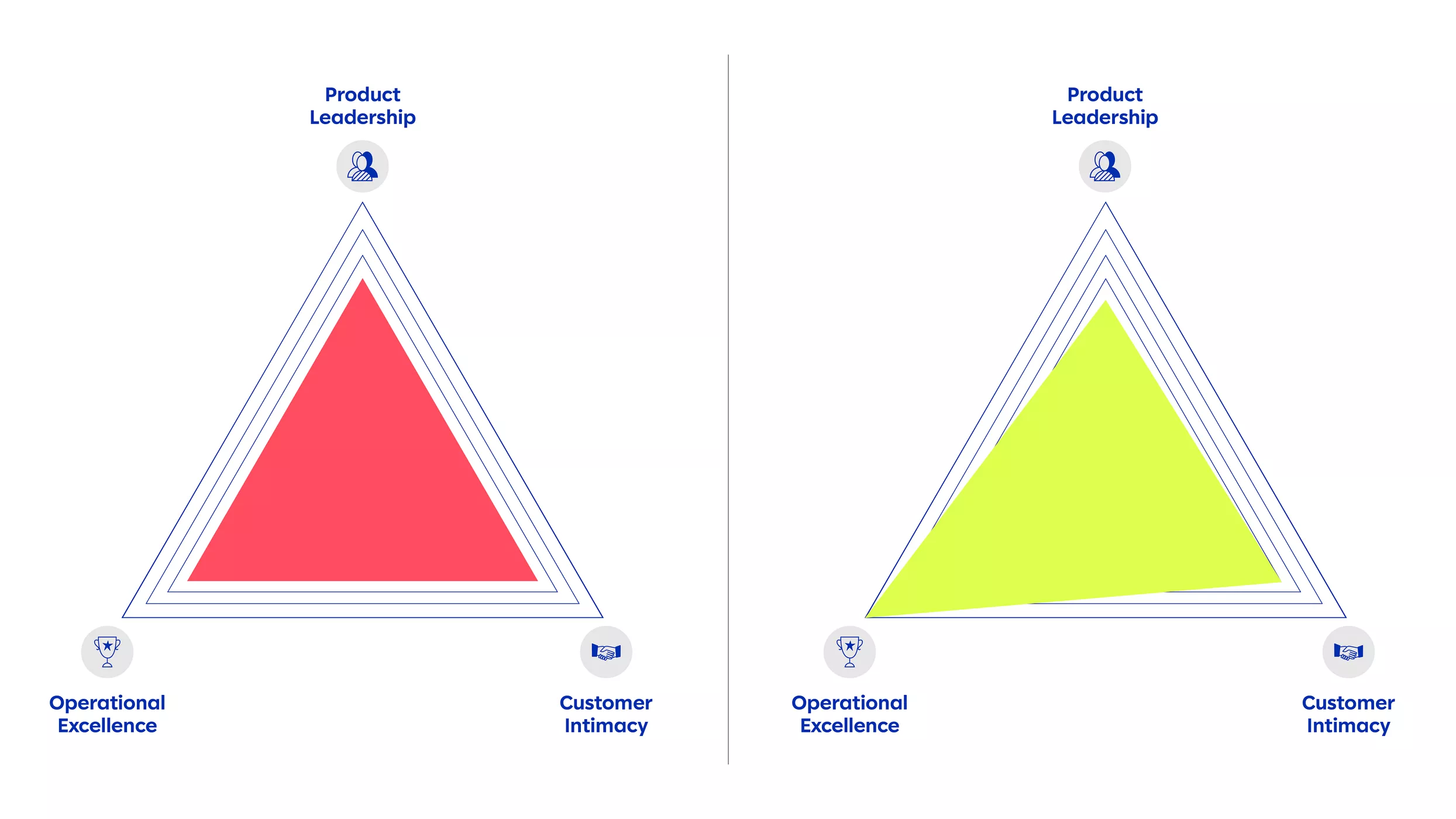Adaptive organizations: A practical approach to AI-enabled operating models

Building an adaptive organization
When we talk about adaptive organizations and AI-enabled operating models, what it really comes down to is gaining the flexibility your organization needs to succeed with AI through the right combinations of humans, processes, and machines. Gone are the days of the “one step at a time” approach where you’d 1) develop a strategy, 2) design the operating model, and 3) deploy and manage change. These are now perpetually concurrent activities in an adaptive organization, and they take thoughtful planning, iterative experimentation, and a willingness to learn as you go. Perhaps the most daunting part: your job is never done.
In our experience, however, we’ve found the following principles can help:
Define value, and prioritize: “So what?” should be the first thought when testing AI. Align your efforts with areas where AI can deliver the most measurable impact—whether it’s boosting revenue, cutting costs, reducing risk, or improving operations.
Start small, think big: Focus on small, practical wins that demonstrate value quickly, but always keep an eye on the bigger transformation. What’s one simple but ubiquitous process you could improve with AI right now?
Test and learn: AI works best when it’s treated as an evolving tool, not a one-and-done solution. Develop a process for testing ideas, scaling the ones that work, and throwing the ones that don’t in the recycling bin (you might use them later).

Get specific on “value”
Just to be clear, this is not what we mean by being specific when defining the value you want to achieve from your AI program:
Specific is simple and to the point: “We value activities that …”
Grow revenue
Reduce costs
Mitigate risks
That’s it. If an AI use case doesn’t help do one or more of those things or isn’t a precursor to them, you need to ask yourself if you should pursue it. Granted, grace should be shown during experimentation as you fill your funnel of AI use case opportunities, but be judicious about what use cases take your finite resources. Say NO to low- or no-value things so you can say YES to the right ones.
The essence of strategy is choosing what not to do.
Michael Porter
Harvard Business School
Source: What is Strategy, Harvard Business Review
Align AI efforts to strategy; what is your organization doing to realize its why? How does a given AI use case support that what? For an organization’s AI decision-makers, it’s imperative that they’re able to articulate what their strategy is and connect AI to value-adding processes.
Building an adaptive organization isn’t just about the technology—it’s about making the right strategic choices. We find the value discipline framework from Michael Treacy and Fred Wiersema to be incredibly helpful. It encourages focus on one of three core strategies, which can help you prioritize AI initiatives that align with your organization’s strengths and strategic goals:
Customer intimacy: Enhance, don’t replace, human interaction with AI. How can AI help you deliver a more personalized, meaningful customer experience?
Operational excellence: Streamline workflows and cut costs with automation. Where can AI reduce complexity or eliminate inefficiencies?
Product leadership: Use AI to drive innovation and speed to market.

Scaling AI the right way
Deploying AI to build an adaptive, AI-enabled operating model is not a decision of “will I?” or “won’t I?” You will, because you have to. How your humans, processes, and machines come together in an effective manner is the biggest question you will face. There are many ways to be effective at these intersections; think of your AI deployment options as a spectrum:
Assist: AI helps the human with simple tasks.
Augment: AI enhances the human’s decision-making.
Anticipate: AI predicts trends and risks and makes humans aware.
Associate: AI provides recommendations for complex problems.
Automate: AI takes over repetitive, low- and no-value activities.
Agentize: AI operates independently of the human in specialized roles.
This spectrum isn’t always a maturity curve, but it can help frame your thinking early in your AI journey. Remember Start small, think big? Start with finding ways to assist and augment humans and their processes. Then, consider what it might mean to automate those processes. Posit what it might mean to agentize parts of humans’ work. Value correlates with how far toward the right on the spectrum you go, but so do cost and risk, and aren’t we trying to reduce them? Test and learn.
The hype will be realized: Now what?
There’s no escaping the fact that building an adaptive, AI-enabled organization is hard, messy, and requires leaders who are willing to experiment, learn from failure, and adapt as they go. History shows us that transformative technologies tend to realize their promise, often in ways and at a pace that are impossible to predict. AI is no different. The question isn’t if it will reshape the way we work, but how and when. While we can’t foresee every turn, one thing is certain: the organizations that take thoughtful, deliberate steps now will be the ones poised to lead the way.
At Slalom, we’ve been in the trenches with our clients, helping them navigate this journey. We’ve seen what works, what doesn’t, and what it takes to get it right. So, what’s your next step?